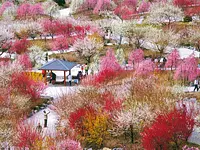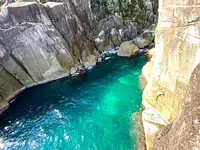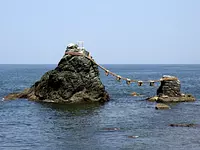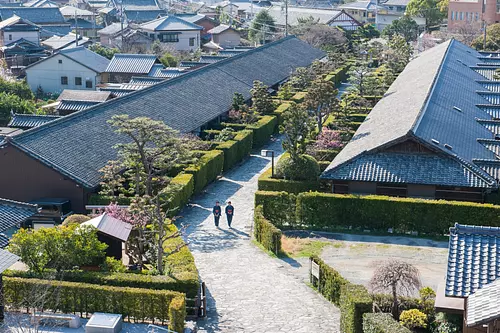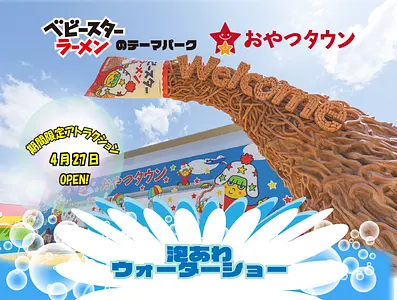“Yoshi Onii-san” takes on a family photo at GojobanYashiki! Learn how to take photos from photographer Masashi Asada [Part 2]
掲載日:2021.09.22
Former gymnast brother ``Yoshi-niisan'' takes on the challenge of taking family photos! We will practice shooting at GojobanYashiki, which was the setting for the movie ``Rurouni Kenshin,'' and learn from photographer ``Masashi Asada'' how to shoot indoors and use a self-timer using a tripod.
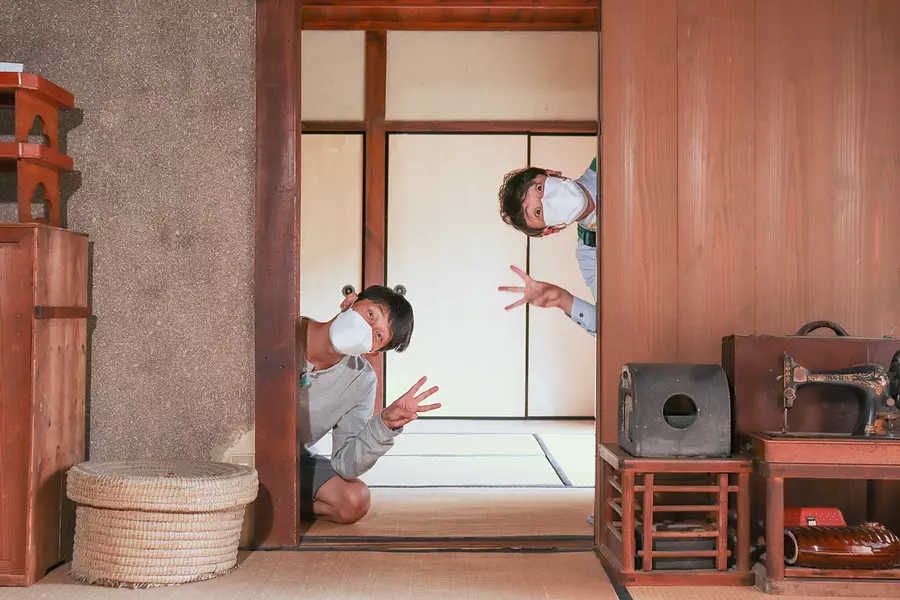
``Yoshi-oni-san'' is a former gymnast and is now the father of a 2-year-old child. In preparation for his debut as a dad cameraman, ``Yoshi Onii-san'' joins the Mie Travel Camera Club for one day only! Yoshi-onii-san will be taught basic camera operations and how to take family photos by Masashi Asada, a photographer from TsuCity who is the head of the Mie Travel Camera Department.
*This article is based on the September 22nd broadcast of "Yoshi Onii-san is starting to look more like a dad," which is broadcast every Wednesday on CBC TV. This is a continuation of the broadcast on September 15th.
Summary so far
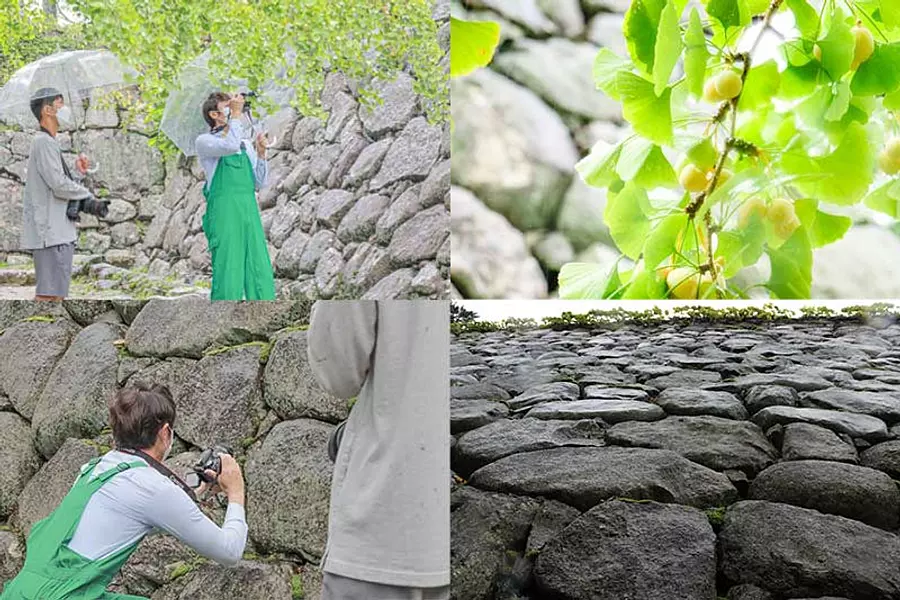
In the first part, ``Yoshio-niisan'' learned the basic operations of a camera from Masashi Asada at the Matsuzaka Castle ruins. In the second part, we will try indoor photography at GojobanYashiki Yashiki! We will also try taking family photos using a tripod and self-timer!
* Click here for the article for the first part (Matsuzaka Castle Ruins).
“Yoshi Onii-san” filmed at GojobanYashiki

GojobanYashiki is a samurai residence where the samurai who guarded Matsuzaka Castle and their families lived. Currently, you can tour the inside of the building on the west side (admission is free).
Filming locations for the movie “Rurouni Kenshin”
GojobanYashiki was the filming location for the final chapter of the Rurouni Kenshin movie series, ``Rurouni Kenshin: The Beginning'', and is also a popular spot for fans to visit. Filming took place here a year before the movie was released.
“Yoshi Onii-san” Learn how to take indoor photos
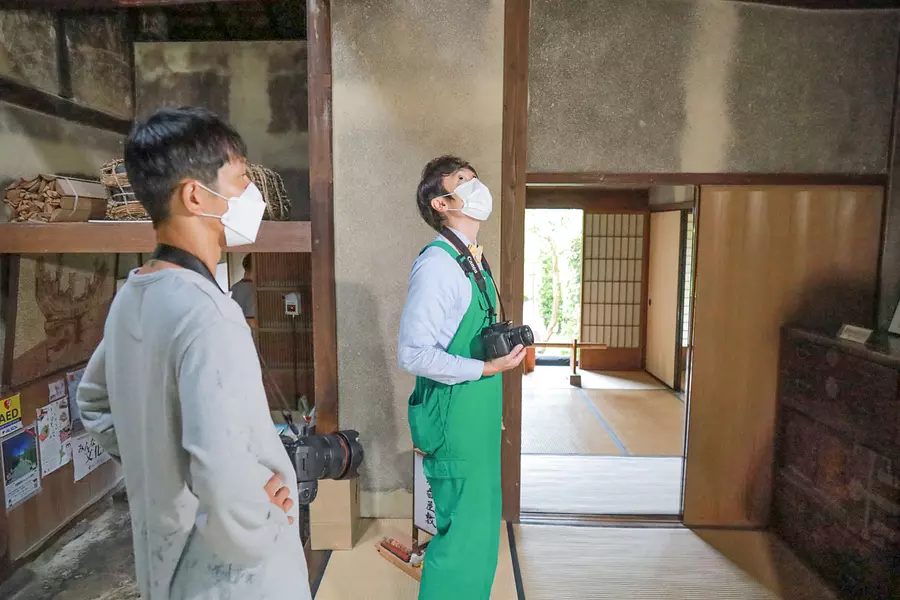
Yoshi Onii-san: ``The photo was taken outside earlier, but will the method of shooting change if it is taken indoors?''
Masashi Asada: ``It's covered with thick clouds today, so the light is soft.''
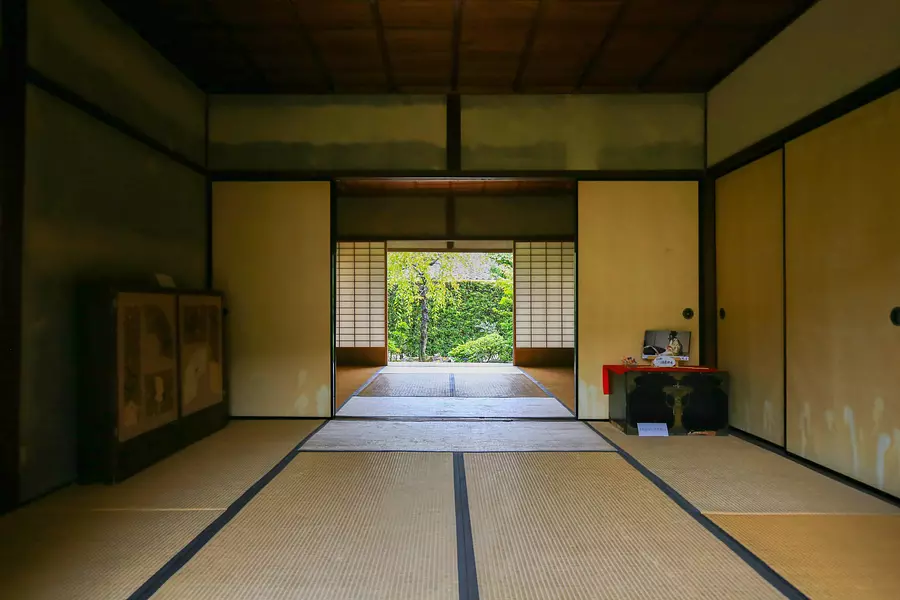
Masashi Asada: ``Since it's an old-fashioned building, there isn't much electricity, so there's a soft light on the tatami mats.Indoors, that kind of thing bothers me.''
Yoshi-nii-san: “It feels nice to see the light coming in.”
“Yoshi Onii-san” Photographed with “natural soft light” in mind
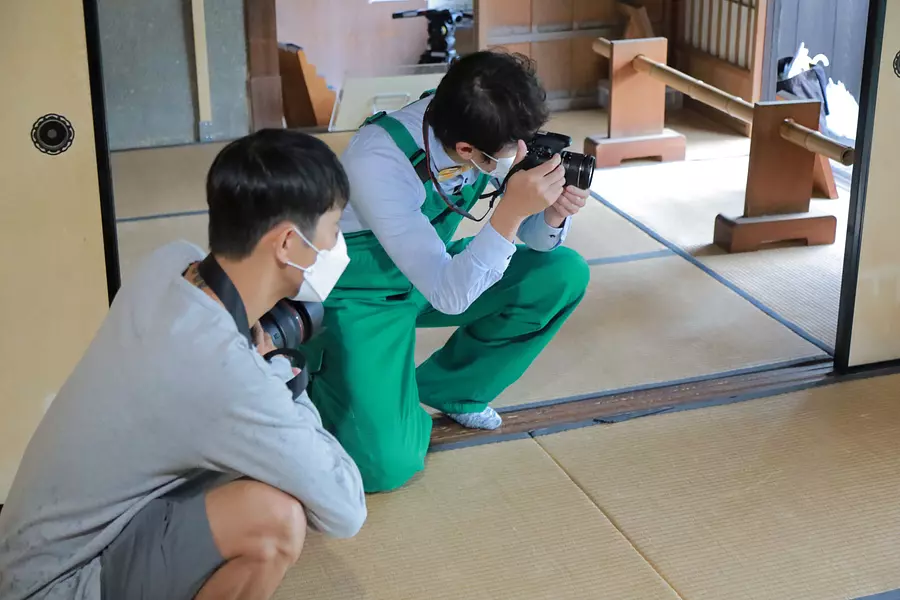
``Can you tell the difference in light?'' Masashi Asada gives advice to ``Yoshi Onii-san.'' Here are photos taken by Yoshio-niisan, focusing on tatami mats with varying levels of light.
Yoshi Onii-san photo shoot ①
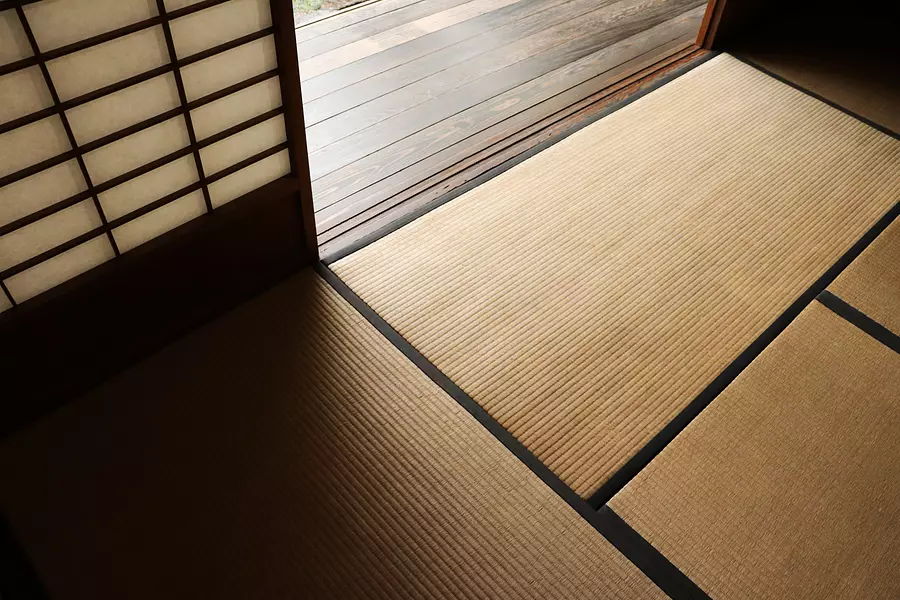
It perfectly captures the soft light coming in from outside. This photo captures the shadow of the shoji screen and conveys the three-dimensional feel and texture of the tatami.
Yoshi Onii-san photo shoot ②
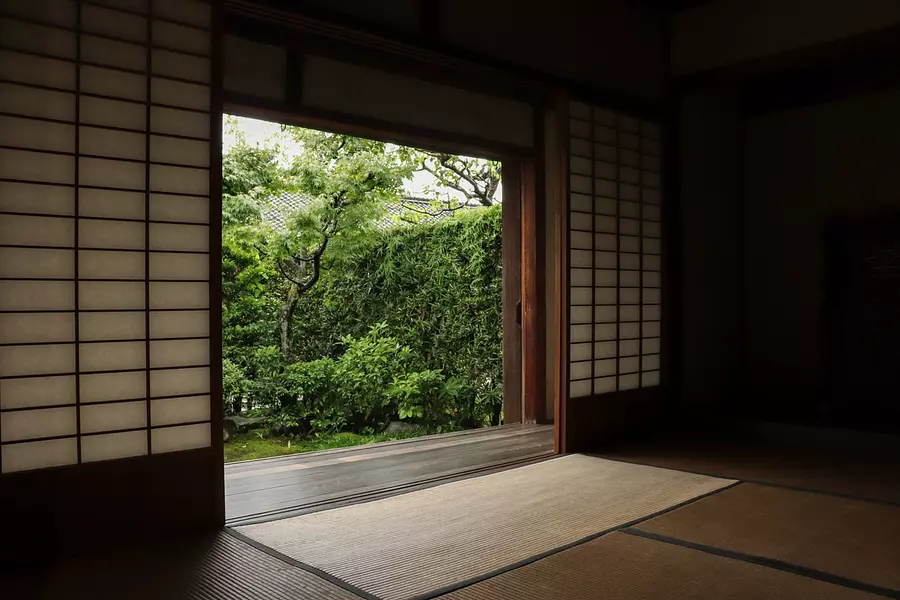
The beautiful green garden beyond the shoji GojobanYashiki a nostalgic feel. This is a beautiful photo that clearly conveys this.
Masashi Asada: ``Even when it comes to buildings, I tend to take pictures of the whole thing, but if I narrow down the area more and more and clarify what I think is good, I end up with a composition like the one I just shot. think"
``Yoshi Onii-san'' told us why he was able to take such beautiful photos.
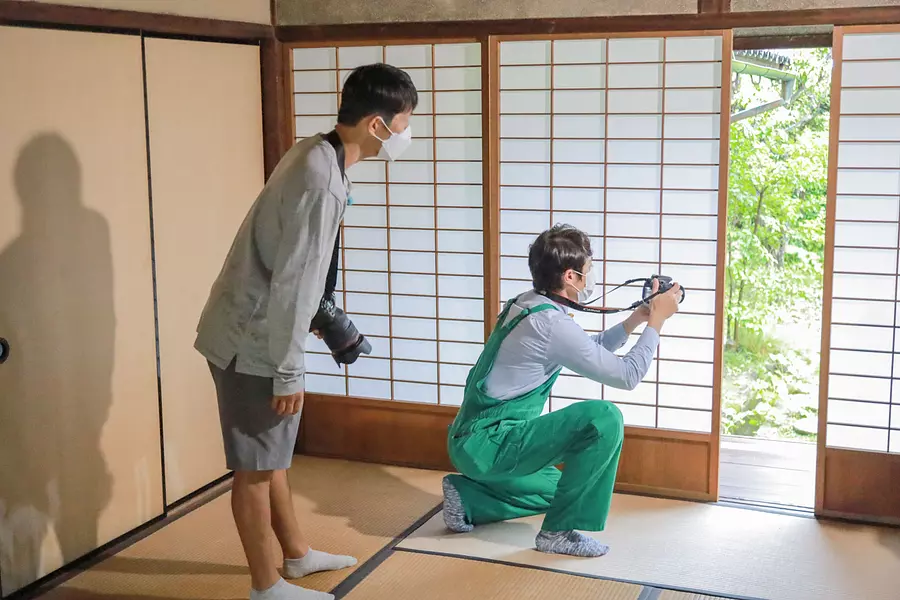
Next, release the shutter through the gap in the shoji screen.
Yoshi Onii-san photo shoot ③
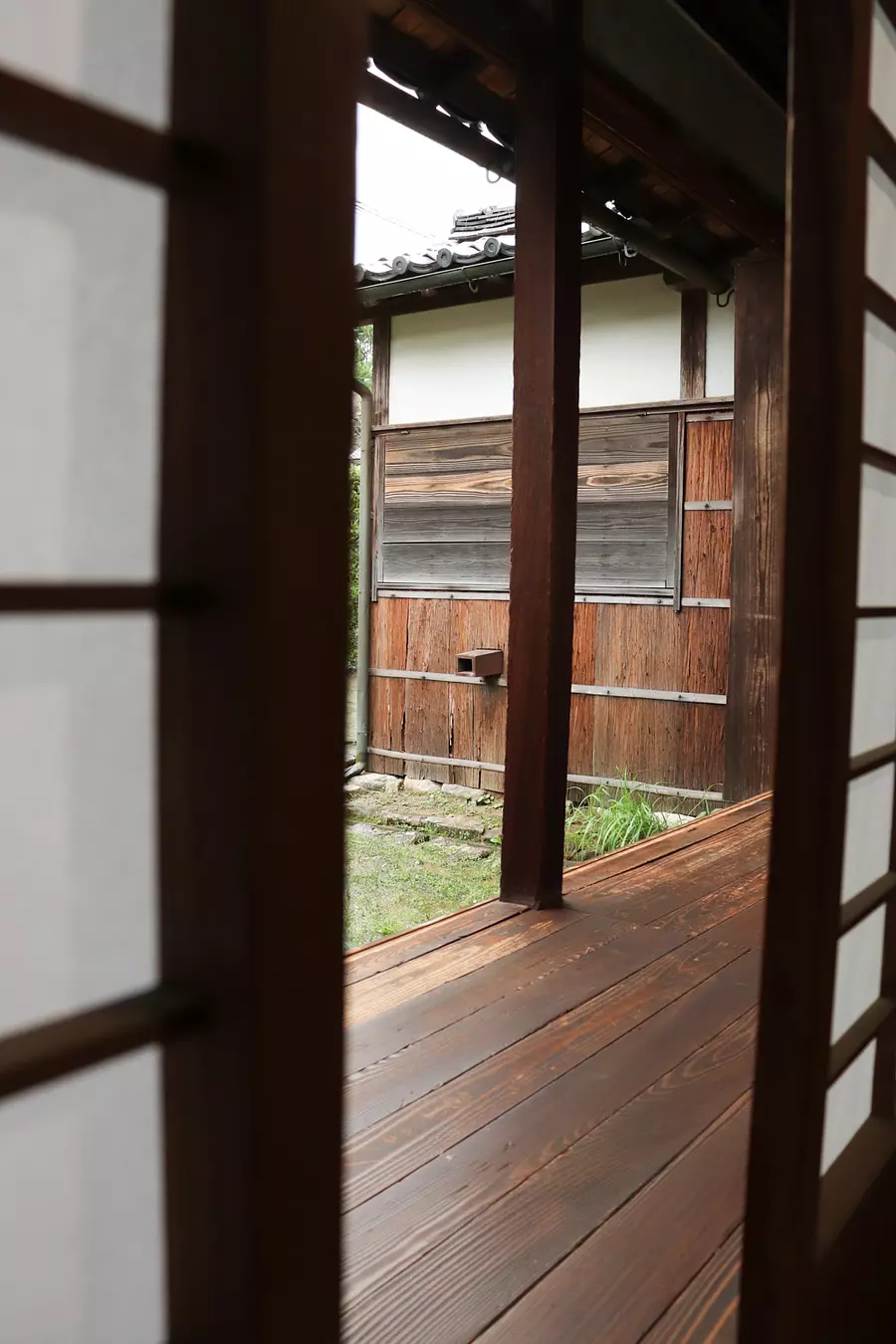
This is called a ``sandwich composition,'' and it is a technique in which the main subject is sandwiched between two things to make it look more beautiful. By sandwiching it between shoji screens, the eye is drawn to the hallway outside, and the piece conveys the warmth and texture of the wood.
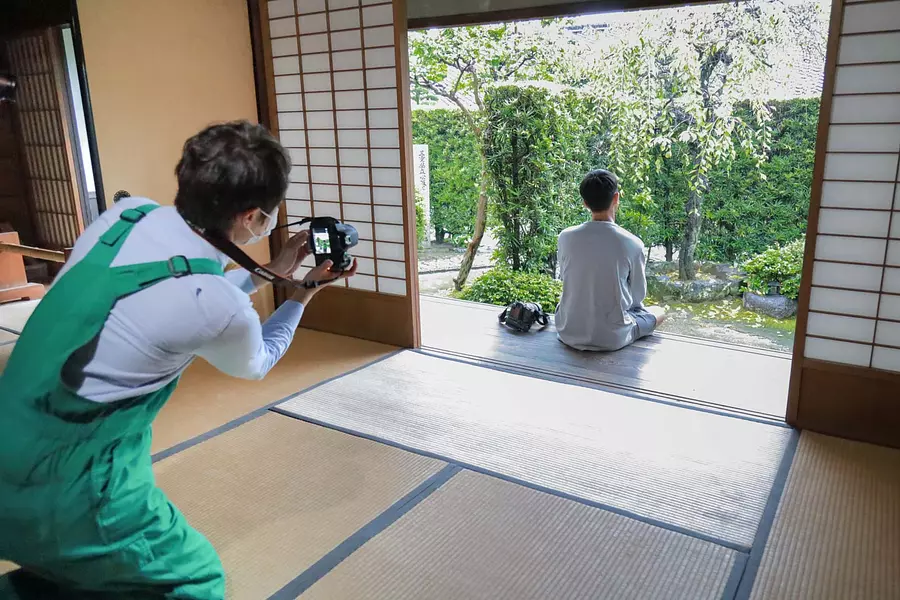
Masashi Asada: ``The atmosphere changes when there are people in the building, so let's try taking pictures of people.''
“Yoshi Onii-san” takes on the challenge of photographing people! The model is Masashi Asada.
Yoshi Onii-san photo shoot ④
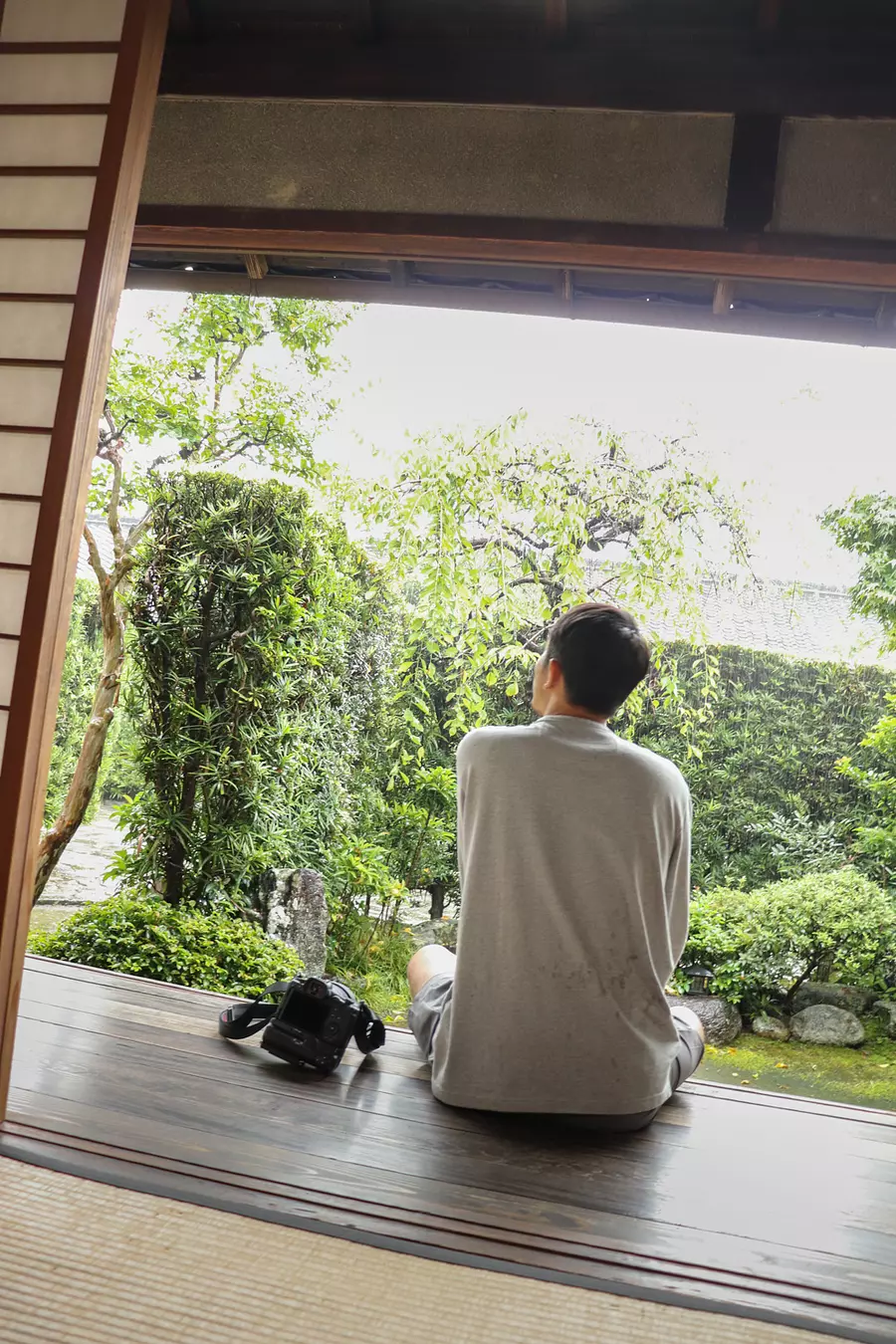
The damp atmosphere of GojobanYashiki on a cloudy day and the sight of Masashi Asada standing there match perfectly. By taking the photo at a diagonal angle, I was able to make the still subject appear even more impressive. The diagonal angle is a composition that can also be used for portrait photography, so it's useful to remember.
“Yoshi Onii-san” family photo challenge
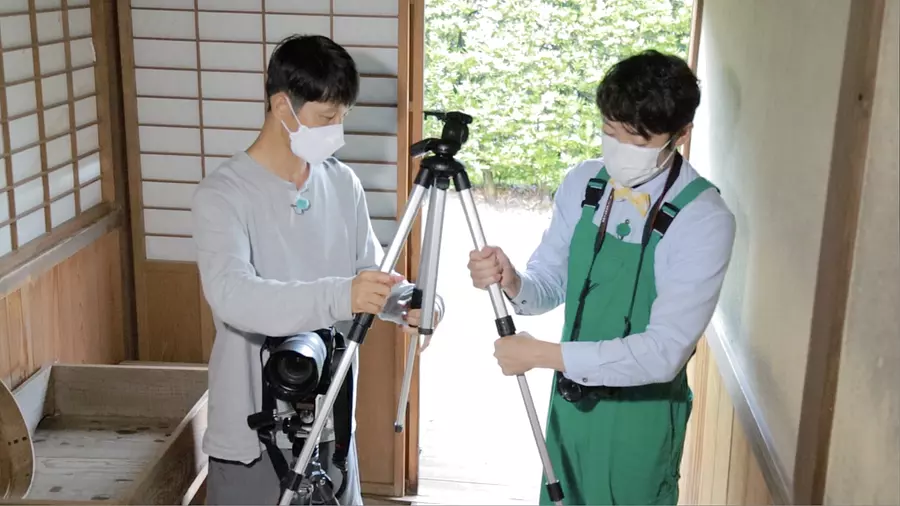
Now it's time to practice the main topic: family photography. First, I learned how to assemble a tripod and how to attach a camera.
This time I will be taking photos using a self-timer, so I will fix the camera on a tripod.
About how to take family photos
Yoshi-nii: “What should I pay attention to when taking family photos?”
Masashi Asada: ``Generally, I think fathers often hold the camera and take pictures of mothers and children, but I think it would be better if everyone was in the picture.''
Yoshi-nii-san: “I see! That’s true. It might be the most important thing.”
Masashi Asada: ``It doesn't have to be every time, but once in a while, it's more special to have the whole family in the photo.''
I learned that family photos become fun memories when everyone is in them.
Self-timer shooting settings
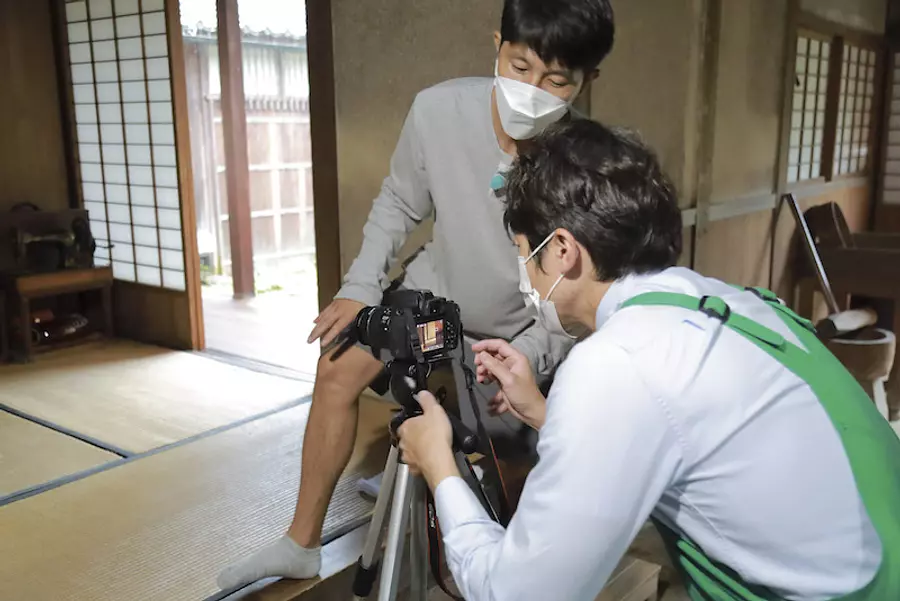
Set the camera on a tripod and adjust the brightness using plus/minus correction. If you want to take a clearer picture of the face, set the value on the plus side, and if you want to take a calmer and more impressive photo, set the value on the negative side. This time, I set it to a negative number.
The plus/minus correction is explained in detail in the previous article.
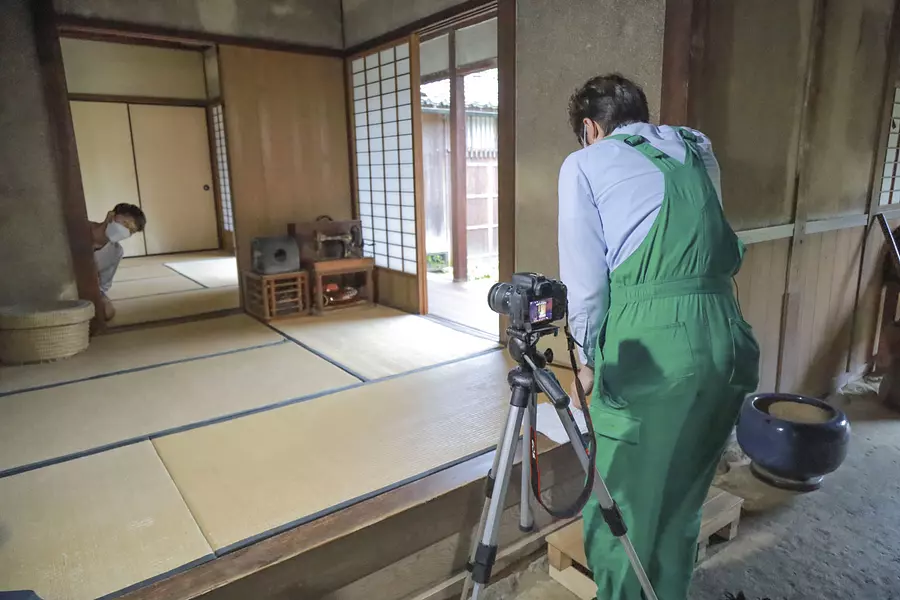
After setting the self-timer to 10 seconds and pressing the shutter, ``Yoshi Onii-san'' trots over to Masashi Asada. Scenes like this are fun moments that can only be achieved with a self-timer.
Yoshi Onii-san photoshoot ⑤
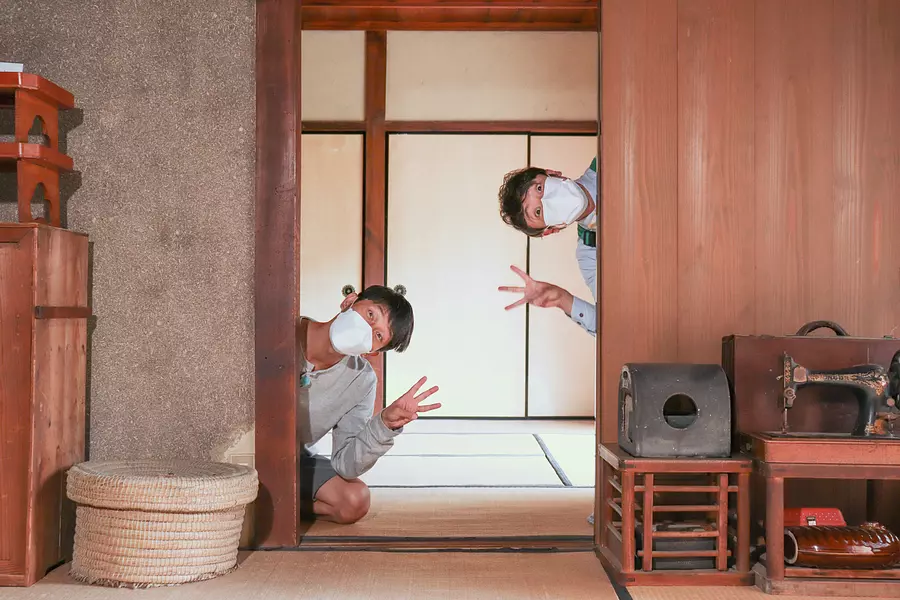
I decided on a three-piece pose keeping in mind the ``3'' in ``Mie''. The photography was done by Yoshi Onii-san, and the composition was a collaborative play designed by Masashi Asada. The fun atmosphere can be felt from the photos.
One tip to take more impressive photos is to use the things around you. This time I used a wall.
Impressions of shooting using the self-timer
Yoshi-niisan: “The 10 seconds after you press the self-timer are fun.”
Masashi Asada: ``That's right. When I repeat it over and over again, there are times when I get a lot of laughter, and sometimes I can't make it in time. Even when the kids push it, they can do it, so it gets exciting.''
Yoshi-nii-san: "That's true. I just realized that you need a tripod to take family photos. I learned a lot."
``Yoshi Onii-san'' Mie Travel Camera Club After 1 day special admission...
Yoshi-nii: ``It was a day where I learned a lot of things and took some very satisfying photos.How was my camera sense?''
Masashi Asada: ``I think there are so many.When I take a photo, I want to do this or that, so I thought it would be a waste to just take it with my smartphone.''
Yoshi-nii: ``Thank you. I thought about buying a camera on the way home.'' I called my wife and said, ``Please buy me a camera.'' (lol)
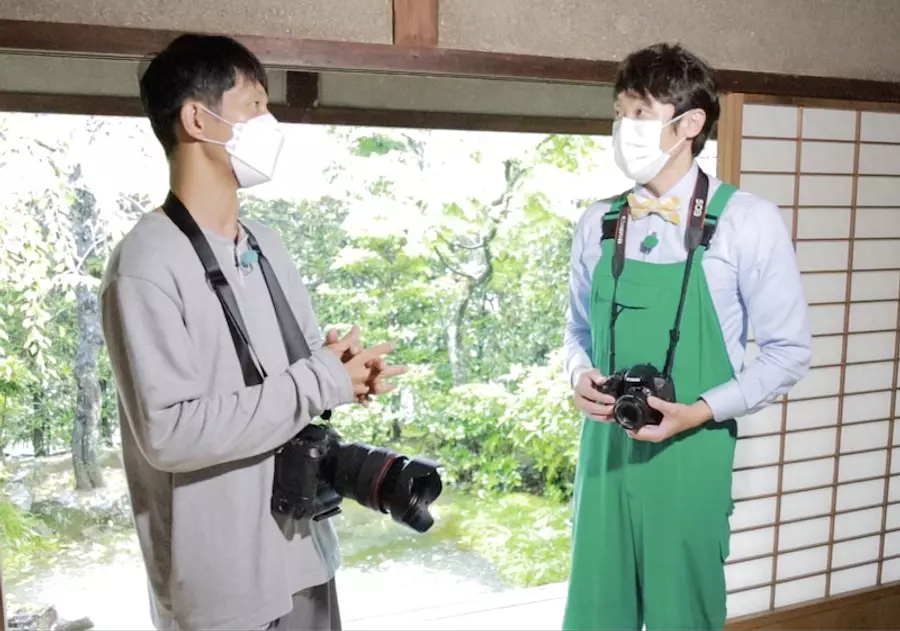
Yoshi-nii: “As the head of the Mie Travel Camera Club, what kind of things would you like to photograph in the future?”
Masashi Asada: ``There are so many good things about Mie, and there are so many different ways to convey those good points, but I think there are some things that can be conveyed through photos.So, through photos, we can think, ``It's really good.'' I want to do my best to let people from outside the prefecture and around the world know about this place."
Yoshi-niisan: "I'm looking forward to your future activities. Thank you for today."
``Yoshi Onii-san'' learned various things about photography during his one-day special membership in the Mie Travel Camera Club. I have taken a big step towards my debut as a dad cameraman.
If you read this article, why not try taking family photos using a self-timer and tripod?
Photo/Text: Fugamaru-chan
Masashi Asada's recommended photo spots
Masashi Asada's recommended photo spots are introduced in the Mie Travel Camera Club article. Please see the link below.
- ② "Asada Family" Photographer Masashi Asada visits places connected to his hometown of TsuCity, such as Takada Honzan.
- ③Enjoy activities at Ise-Shima's "UmiHozuki" and "Shima Nature School"! Photographer Masashi Asada's family experiences this as a parent and child! !
- ④ [Glamping in Ise-Shima] Enjoy Grandhome Ise Kashishima with your child! Accommodation experience with photographer Masashi Asada's family♪
About “Yoshi-niisan is starting to look more like a dad”
A segment aired every Wednesday on the CBC TV program "Chant!" Introducing the charms of Mie Prefecture, located almost in the center of the Japanese archipelago, from a father's perspective. This is a program in which ``Yoshi Onii-san'', who is growing as a father every day, uses the knowledge of Mie Prefecture he has learned so far to convey information about Mie from a more mature perspective.
Past broadcast contents are published on the official website of "Chant!"
| Category | |
|---|---|
| season | |
| area |
